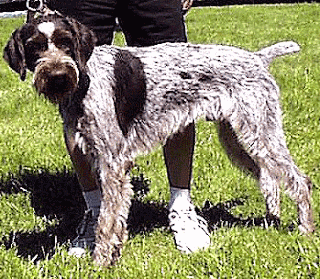 |
| German Wire-haired Pointer |
The German Wire-haired Pointer was developed in Germany during the early years of the 20th century. It is said to be a mixture of the German Pointer, Wire-haired Griffon, Foxhound, Bloodhound and Poodle-Pointer breeds. The German Wire-haired Pointer is a good hunter which is able to track game on various terrains. It also possesses a good nose for hunting, tracking and pointing and can retrieve in both land and water, making them good hunting companions.
The German Wire-haired Pointer can be characterized as a working dog, as it loves to perform duties for its owner. The breed is an ideal watch dog, with its physical strength and energetic nature. It is very active and intelligent but can sometimes tend to be jealous when not given ample attention. The German Wire-haired Pointer is also generally friendly, even with other non-canine animals, but can be quite aloof, especially towards strangers.
Care
The coat of the German Wire-haired Pointer should be brushed at least twice a week with a firm bristle brush. The coat also needs to be stripped occasionally to maintain a clean natural look. Check the ears and feet thoroughly, especially after exercise. Bathe only when necessary and make sure to dry them properly to avoid chilling.



